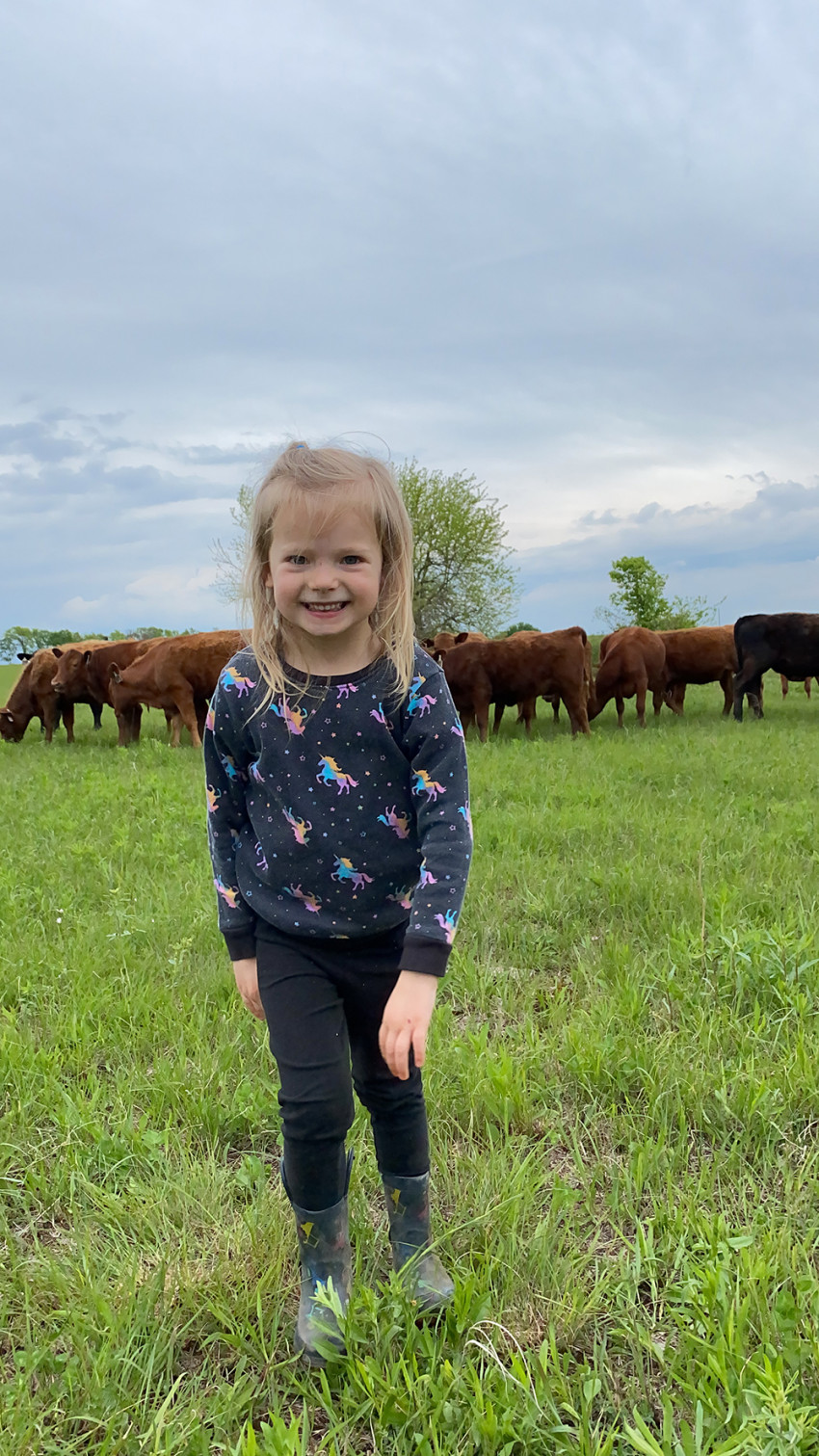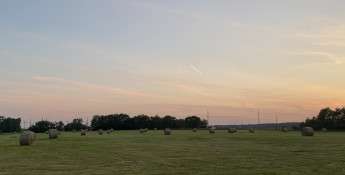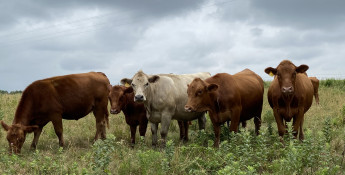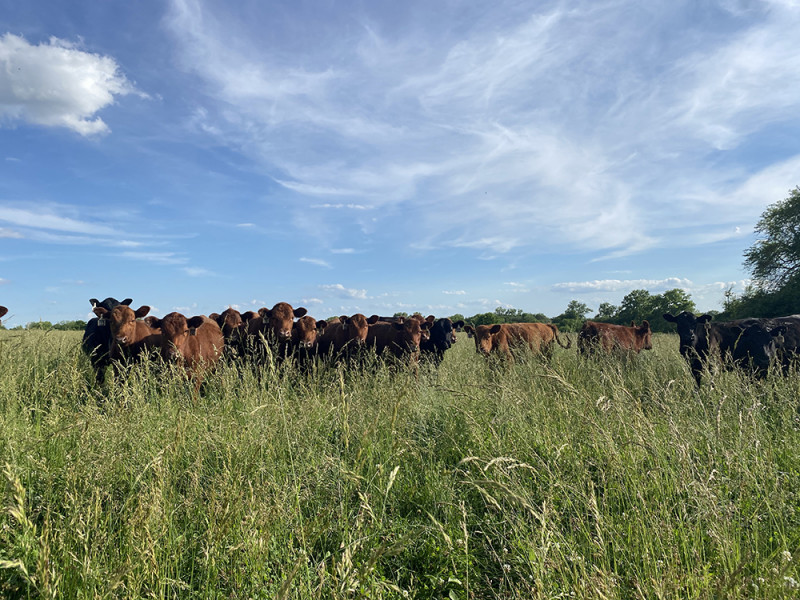By Brandi Buzzard on June 29, 2021
Rain Makes Grass, Healthy Cattle and Jolly Ranchers
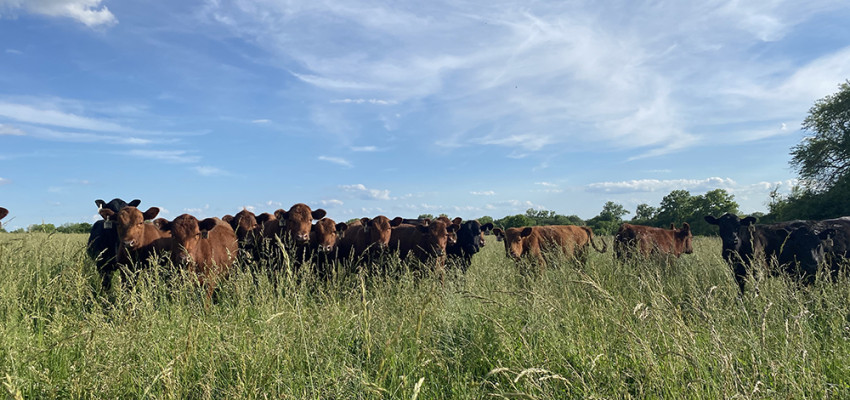
Our ranch is in what I call the “Ozarks of Kansas,” where we have high humidity and receive roughly 40-45 inches of precipitation every year. While we do manage a fair share of mud, this year we are also reaping the benefit of that moisture in the form of ample grass supplies in our owned and leased pastures.
The grasses in our pastures are varied – fescue, native grasses and legumes, such as clover – are growing very well this year and we are thankful for the moisture. Pastures full of grass lead to healthy cows in good body condition. Furthermore, we can harvest and store a lot of hay that will be used next winter and early spring.
Overall, when we are blessed with moisture, other blessings manifest themselves.
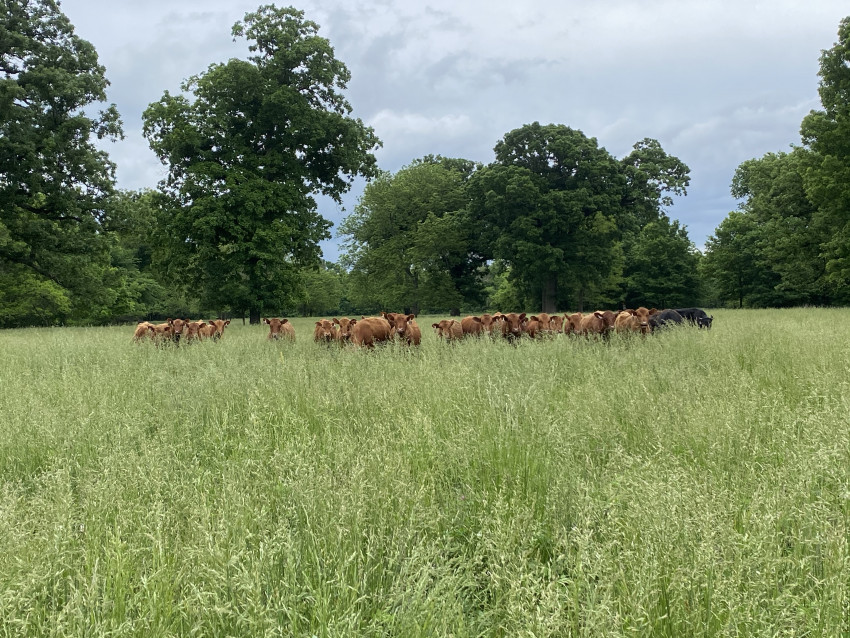 One such manifestation is the opportunity to expand our ranching business this year. Because of our grass supplies, we have contracted several stocker cattle from a fellow rancher – stocker cattle, or stockers, are weaned cattle that weigh between 350-800 pounds. We don’t actually own the cattle, but we are caring for them for a short, predetermined amount of time. Many ranchers will specialize in stocker management and postweaning growing programs that produce commercial cattle for the beef supply. Based on several variables in the beef and agriculture industries such as feed costs, weather and the nation’s cowherd number, the size and scope of the stocker industry changes.
One such manifestation is the opportunity to expand our ranching business this year. Because of our grass supplies, we have contracted several stocker cattle from a fellow rancher – stocker cattle, or stockers, are weaned cattle that weigh between 350-800 pounds. We don’t actually own the cattle, but we are caring for them for a short, predetermined amount of time. Many ranchers will specialize in stocker management and postweaning growing programs that produce commercial cattle for the beef supply. Based on several variables in the beef and agriculture industries such as feed costs, weather and the nation’s cowherd number, the size and scope of the stocker industry changes.
Once they are weaned from their mamas, stockers are sent to ranches like ours to eat grass and gain weight. The stockers on our ranch will graze in our pastures for approximately three months. During that time, we will provide them with unlimited grass, fresh water and mineral while monitoring their health for any issues that may arise. At the end of the contracted growing time, the cattle will go onto the next phase of the beef lifecycle in a feed yard.
Even though we have ample grass this year, we don’t want to abuse it by grazing it down to the nub. Rotational grazing is something we are passionate about.
These stockers will graze in a pasture for two weeks before moving onto the next one. After the stockers have spent their two weeks’ time grazing, the cows will graze that pasture for two weeks and then be moved. We then rest that pasture and let it regrow for a whole month before cattle are turned out to graze again. This rotation allows us to put weight on our cattle but also make sure the grass, roots and soil are consistently healthy. Sustainable ranching is important to us, and if we don’t take care of the land, it won’t take care of us or our cattle for years to come.
The goal of our stocker endeavor this year is to offset the cost of rented pasture and grass management practices we have in place, such as fertilizer and weed control, by adding another income stream. We may not continue this aspect of our ranching business next year, as moisture may be limited, and we could be dealt a different set of circumstances. However, as ranchers we must be willing to be flexible and make decisions that are good for our ranch, the land and the cattle we raise and manage.

